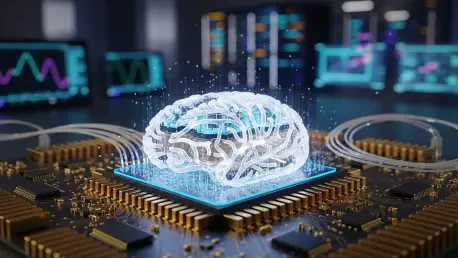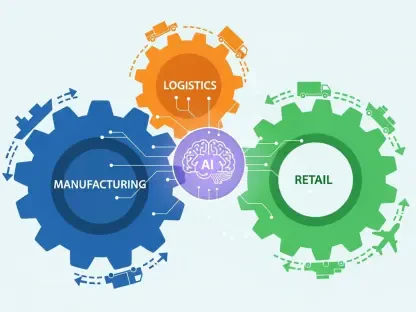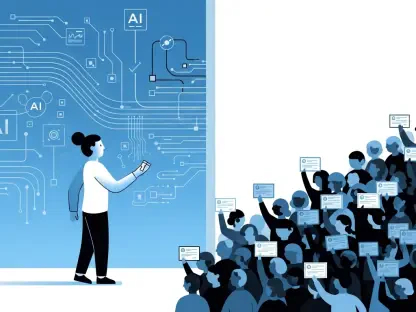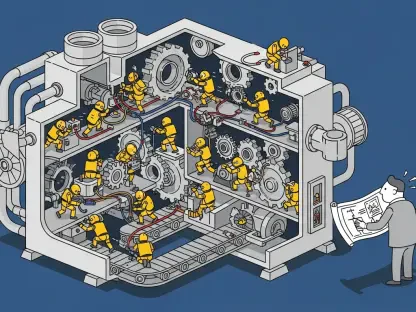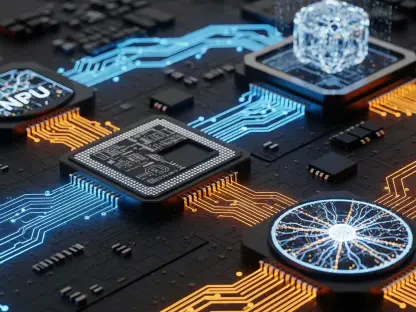Picture a moment where a thought alone can move a prosthetic limb with the precision of a natural hand, or where artificial intelligence systems process complex data as intuitively as the human brain. This vision is no longer a distant dream but a tangible reality, thanks to a revolutionary brain-like chip developed by researchers at the Korea Institute of Science and Technology (KIST). This cutting-edge technology, capable of analyzing neural connections in real time, promises to transform brain-computer interfaces (BCIs) and redefine how machines interact with human cognition. The implications are staggering, opening doors to medical miracles and advanced AI applications that could reshape daily life.
The Power of Now in Neural Technology
At the heart of this breakthrough lies a critical need: the ability to decode brain signals instantly. Real-time neural analysis is essential for applications like controlling prosthetic devices, enhancing cognitive functions, and powering next-generation AI. Without this capability, delays in processing brain signals create barriers, making seamless interaction between mind and machine nearly impossible. The innovation from KIST addresses this gap head-on, positioning it as a cornerstone for advancements in both personal health solutions and industrial technologies.
The global stakes are high, with major players like the United States and Europe investing billions in neuromorphic engineering—a field inspired by the brain’s architecture. This strategic focus underscores a race to dominate a technology that could dictate the future of computing and human augmentation. The urgency to overcome traditional limitations in neural processing speed and accuracy has never been more evident, and this chip stands as a pivotal step toward meeting those demands.
Decoding the Brain with Unmatched Precision
Delving into the mechanics, the KIST team’s neuromorphic chip replicates a key biological process known as spike-timing-dependent plasticity (STDP). This principle mirrors how the brain strengthens or weakens neural connections based on the timing of signals, enabling the chip to learn and adapt dynamically. By embedding this mechanism, the technology bypasses the need for extensive data storage, a common bottleneck in older systems, paving the way for instantaneous analysis of neural patterns.
What sets this chip apart is its streamlined design, eliminating memory-intensive reverse lookup tables that plague conventional hardware. This architectural choice results in processing speeds up to 20,000 times faster than traditional methods, while maintaining pinpoint accuracy. Additionally, the chip distinguishes between excitatory and inhibitory neural connections, offering a nuanced view of brain activity that is crucial for applications like precise control of external devices.
The real-world impact is already measurable. Performance metrics reveal not just speed but also scalability, making the chip suitable for highly integrated systems. Imagine a scenario where a patient with a brain-controlled prosthetic experiences fluid movement without lag—this technology makes such outcomes feasible, backed by data showing consistent reliability in signal interpretation across varied conditions.
Expert Perspectives on a Game-Changing Innovation
Insights from the field add weight to the significance of this development. Dr. Jongkil Park, a leading researcher at KIST, emphasizes the chip’s versatility, stating, “This technology has the potential to revolutionize not just medical devices but also complex systems like autonomous vehicles and satellite communications.” Such expert commentary highlights the broad applicability of neuromorphic advancements, extending far beyond individual use to societal-scale solutions.
The scientific community echoes this optimism, with many in neuromorphic engineering advocating for biomimetic approaches like STDP as the future of AI. Research published in reputable journals supports this consensus, noting that mimicking biological learning rules is key to surpassing current computational limits. A vivid example comes to mind: a patient, once limited by delayed responses in a brain-controlled device, now navigates daily tasks with newfound independence, illustrating the human impact of this work.
This blend of technical prowess and real-life potential underscores a shared belief among experts that such innovations are not mere experiments but stepping stones to transformative change. The excitement is palpable as researchers and industry leaders alike recognize the chip’s role in bridging the gap between theoretical promise and practical utility.
Real-World Applications Taking Shape
Turning to implementation, the brain-like chip offers concrete possibilities across multiple domains. In medical settings, it enables direct brain control of machinery, such as prosthetics or assistive robots, by processing neural signals in the moment. Beyond healthcare, its ability to replicate brain functions positions it as a vital component in AI systems tasked with handling intricate, time-sensitive data, from traffic management to space exploration.
A structured path forward includes integrating this technology into existing BCI frameworks for clinical trials, scaling hardware designs for industrial AI needs, and fostering partnerships with tech giants to accelerate market entry. Challenges like ensuring compatibility with current infrastructures remain, but solutions are within reach through collaborative research and iterative testing. Developers are encouraged to explore open-source platforms to refine the chip’s capabilities, ensuring adaptability across diverse use cases.
The momentum is building as pilot projects emerge, showcasing early successes in controlled environments. For instance, simulations of brain-controlled devices have demonstrated a marked improvement in response times, hinting at the profound shifts awaiting broader adoption. This practical focus keeps the technology grounded, offering a clear roadmap for stakeholders to harness its potential effectively.
Reflecting on a Milestone Achieved
Looking back, the journey of this brain-like chip marked a defining moment in neuromorphic engineering, as it shattered barriers that once seemed insurmountable. The dedication to mimicking the brain’s own learning processes through STDP delivered a tool of extraordinary speed and precision, forever altering the landscape of neural analysis. Its impact resonated across medical and technological spheres, proving that human thought could indeed command machines with unprecedented ease.
As attention turned to the horizon, the focus shifted to scaling this innovation for widespread use, addressing integration hurdles, and exploring untapped applications. Collaborative efforts between academia and industry became imperative to refine and expand the technology’s reach. The challenge ahead was to ensure that such advancements remained accessible, driving progress in ways that benefited humanity at large while pushing the boundaries of what artificial systems could achieve.
